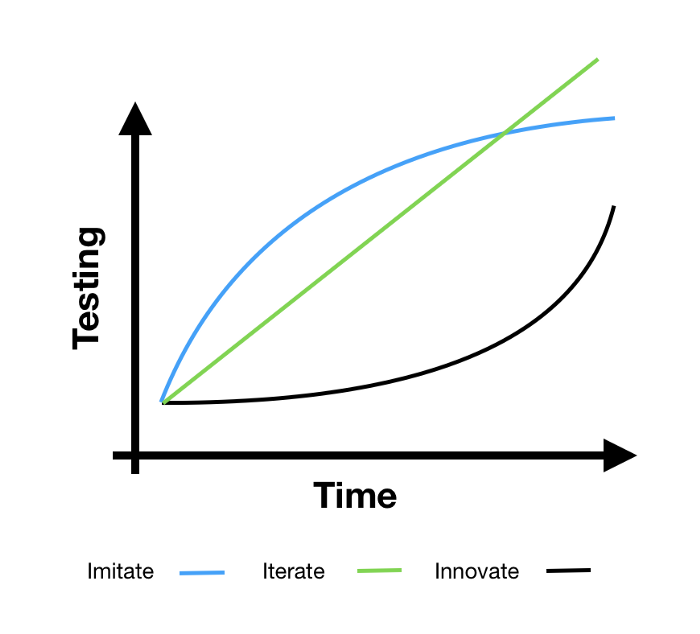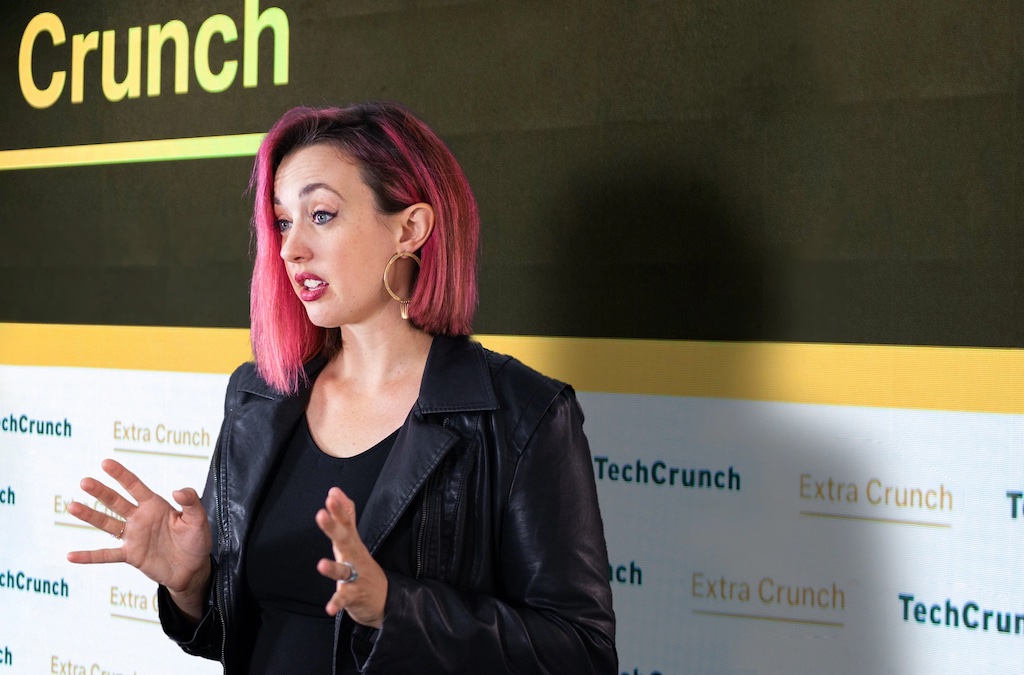Cat Noone is a product designer, co-founder and CEO of
Stark — a startup with a mission to make the world’s software accessible. Her focus is on bringing to life products and technology that maximize access to the world’s latest innovations.
More posts by this contributor
New predictions indicate that tech companies committing to accessibility will reap a total of $10 billion to $16 billion in annual design spending across the U.S. and Canada. The surge in funds reinforces accessibility as not only an ethical priority, but a financial one, too.
Accessibility isn’t, like many believe, kryptonite for profits. It is a moneymaker. One, because making your product accessible adds an additional multitude of people to your potential market. Two, because it actually optimizes your workflow by accounting for more issues beforehand. Three, because it will come back to bite you on the ass with hefty lawsuits and public exposure (read: profit and customer loss) if you ignore it. If anything, remember this: The cost of noncompliance is about three times higher than that of complying.
Today, we’re seeing something similar to what happened with diversity and inclusion: While many businesses used to consider D&I a headache, we’ve since woken up to the fact that having a diversity of genders, ages and ethnicities has a direct effect on the bottom lines of companies. The same realization will come with accessibility.
At its core, accessibility means making your product as usable as possible to the greatest number of people. The appeal and efficiency that entails correlates to higher revenue. So here’s why all businesses can achieve a high ROI from paying attention to accessibility, and how to optimize those returns.
Start by making your teams aware of what they’re missing
Having a training strategy in your business can drive your profits up by nearly 50%. When educating your team about accessibility, you’re not just giving them new skills to raise productivity, you’re optimizing their workflow for the long run and fostering a healthier team culture.
Making your product accessible adds an additional multitude of people to your potential market and optimizes your workflow by accounting for more issues beforehand.
What many teams aren’t understanding today is that accessibility simply opens a product to more users. If we don’t make our employees aware of this, they’ll continue to shy away from the word “accessibility” because they think it means being walled in by some unintelligible regulations. But when we make that process easy to digest for the whole team and create a shared language on accessibility, we make it easier to understand the ultimate goal: smarter design and development.
There are simple ways for businesses to get their heads around accessibility, from IBM’s Equal Access Toolkit to Microsoft’s inclusive design page to the A11Y Project. However, there has been a concerning lack of access to free accessibility resources, which is a key issue that our wider community is trying to change.
Let’s get into the specifics: Through awareness and training, you will start convincing your team about the importance of accessibility so they can commit to it wholeheartedly, not only for the sake of users but because it will improve their own work experience. Working with accessibility in mind makes employees’ work processes more efficient and reduces the cost of errors happening down the line. Moreover, managers will expend fewer resources supervising work to make sure it’s compliant or reworking designs that don’t meet the mark.
Employees will understand the needs of customers far more if they’re made aware of the varied ways different people interact with a product. We’re not talking about a statistically insignificant group: People with disabilities are the largest minority in the United States. One in four U.S. adults suffer from a disability, and globally, we’re talking about 1 billion people — but far more when you account for the many individuals who can’t or won’t go to the doctor or aren’t diagnosed at all. You’ve probably experienced this, too. Temporary disabilities — like having your arm in a cast for a couple of months or recovering from a serious operation — will affect your ability to use certain products if they haven’t been made with you in mind.
Finally, providing this conscious training lets your staff know you are open to having conversations on how to improve work conditions and culture. A happy team is a more resilient team that will stick with you on your product journey, avoiding the costs of recruiting new hires.
Better testing, better efficiency
As your product grows, it becomes less and less malleable. It’s harder to fix the first row of bricks on a new house if you’re already building the second and third stories.
That’s why we need to rethink testing. Continuously trying out your product will tell you what needs tweaking as you advance. The problem is, people with disabilities are being excluded from the testing process. And even when they do appear in data sets, their data are often treated as anomalies because they don’t follow the patterns we’re used to seeing from able-bodied people.
Fixing this starts with how we envision our target market. Do you have people with disabilities — and that includes the invisible ones — in your target user base? As part of your personality profiles? In other words, are you reaching out to and including them, or are they more of a bycatch you don’t expect to see using your product?
Then test for qualitative as well as quantitative input. Get diverse users into the “office,” ask them how they feel about navigating your product. Did it take them time to learn how a certain feature worked? Was something a complete roadblock? We need to understand how they interact with your software as much as the data coming in on retention and time spent per visit.
This has a direct impact on your bottom line. Compliance issues cause a world of pain further on in your journey, when you’re paying hefty fines and rebuilding core elements of your product. Lawsuits against allegedly inaccessible websites are rising, and last year over 2,500 were filed.
With more accurate testing, your processes will become more efficient because you’re understanding where and when in your product lifecycle you need to insert tools and make changes. Essentially, you’ll optimize your workflow. You’ll advance in a straight line as you iterate, rather than having to pause production to go back and make adaptations as and when you realize they’re needed. You’ll launch and get your product into consumers’ hands faster.
Ideally, you’ll be testing within a diverse community that is personally invested in your product’s success — that will give you quicker and more detailed feedback loops.
Create an internal accessibility team
It’s everyone’s job to understand accessibility. However, there will always be people who are specifically focused on ensuring product design, development and marketing initiatives are met.
This group of people should be responsible for upskilling others about accessibility and being the go-to for inclusive design. A company of a few hundred people could assign the task to about 10 people. But at an early-stage startup, it is not enough to just put one or two people on the job. Making accessibility a core part of design and development needs to be baked into the wider culture for everyone involved.
Your long-term returns on assigning a few people to carry out the process accurately will always be higher than the initial expense. Those people will ensure each team is working optimally for all of its users and in sync with one another, rather than wasting valuable time working to lower standards.
It’s better to keep this special team in-house not only to save money but because these are people who already eat, sleep and breathe your product. When bringing in outsiders, whether or not they’re experts, there will always be something of a gap between what they need to know to help and how much you can give as a company. That means any issues that in-house team members aren’t yet aware of, or can’t yet conceptualize, will probably remain unaddressed.
Be smart about how you allocate your budget
You can’t think in the short term when you decide where to put your money. Today’s businesses are designed to steer budgets toward the most tangible and immediate returns. Yet pouring cash into growing fast and furiously, selling quick and cashing in, simply isn’t that simple. Companies won’t buy a product that’s flawed. Brands don’t hold up when there’s little thought going into the product and who’s using it. Consumers won’t fall in love with you.
Strong business leaders will see that there is a time horizon to any investment. Inclusive design is both a cost-saving model and a profit builder, but you won’t see that from one day to the next. You’ll see that when users come to you that you wouldn’t have reached otherwise, and when you avoid the pitfalls that can not only cost, but take down, a company.
So allocate an accessibility budget alongside the product roadmap, from start to finish, taking into account purchasing specialized tools, educating your team and spending time designing your testing strategy, among other things. Set deadlines for accomplishing each goal, and allocate separate resources and timelines per process — it’s better to start with quick wins on newer projects so your team can see and feel the reward, then repeat. You may be spending more at the start as you educate your team, design your testing strategy or purchase specialized tools.
What you don’t want to see in your company is the accessibility conversation, budget and action plan concentrated toward the end of your product development journey. By then, it will be more about fixing what’s wrong than getting it right, at greater cost to you.









